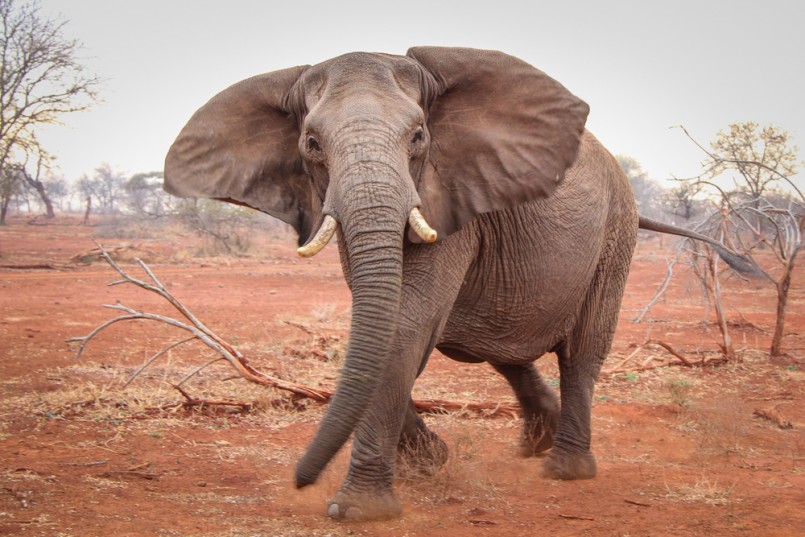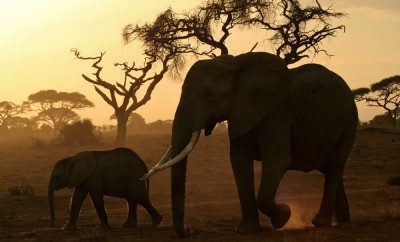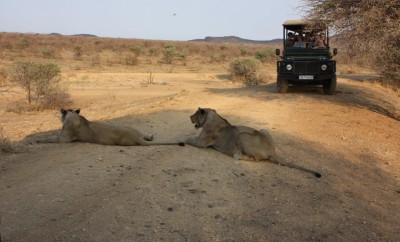Africa
Africa lost 30% of its elephants in less than a decade

Image: Shutterstock/JMx Images
Sobering statistic time: African forest elephants lost 62% of their numbers between 2002 and 2011. Estimates are that less than 100,000 of forest elephants remain. And 30% of African savanna elephants have been killed between 2007 and 2014. That’s 144,000 elephants. Each year, their numbers now fall 8%. Aerial censors state that 352,000 savanna elephants remain—down from 1.3 million in 1979.
It’s all due to poaching. Last month, Botswana’s Chobe National Park had 26 elephant corpses that were founded hacked up in the heavily protected park. It’s the most brutal and widespread poaching attack the park has seen. All over Africa, photos abound of dead elephants that are missing tusks due to the ivory trade. If a poacher was really in a hurry, a dead elephant could be found with its entire face missing.
And it’s not exactly like elephants can replenish their numbers overnight. It would take at least a century to regain African forest elephant populations due to their slow breeding nature.
The complexity of two breeds
Conventional knowledge tells us that African elephants are the same breed. But DNA testing from 15 years ago states otherwise. African elephants actually diverge into two separate species: savanna elephants (Loxodonta africana) and forest elephants (L. cyclotis).
In terms of saving the species, it’s critical information. Female forest elephants breed around the age of 23 and can only give birth once every five to six years. Savanna elephants breed starting at age twelve and reproduce as often as every three years.
But many regulatory bodies don’t recognize the animals as two separate species. Meaning the animals are treated the same for conservation efforts. Given that forest elephants reproduce at half the rate that savannah elephants do, it could mean the death of that species.
What’s more, they live is separate habitats, as their names suggest. Forest elephants are instrumental in dispersing seeds that help maintain the African rainforest. Savanna elephants help biodiversity and keep canopies open. Forest elephants face threats to deforestation, while savannah elephants face issues with unsustainable irrigation and over-harvesting of savanna plants.
Is there hope for elephants?
Ivory trade bans put a dent in the problem back in 1989, allowing some populations to recover. But poaching is back on the rise again. The ivory from an elephant tusk is carved into trinkets, which are especially popular in China in recent years. And the black market will pay as much as $1,500 for a pound of ivory, as of 2014. A male elephant’s two tusks can weigh more than 250 pounds. At the heart of the issue is asking people to say no to money, and a lot of it.
The World Wildlife Fund states that weak law enforcement and governmental corruption underline the efforts to stop poaching, as well. Meanwhile, Namibia and Zimbabwe have expressed interest in allowing limited legal trade of ivory. The two countries feel their elephant populations are healthy enough, even though census surveys show a 74% decline of elephants in one region of Zimbabwe, with an overall decline of 6% for the country.
It’s a complex issue of market demand, weak law enforcement, shaky scientific designations and greater environmental threats. Certainly an issue with no easy answers, but harsher ivory bans, sanctions and stronger law enforcement is a place to start. Wider ranger training and public education have also been helpful.
Another option that has been proposed is flooding the markets with synthetic materials that animals are poached for, like synthetic rhino horn, in hopes of pricing poachers right out of the market. A startup called Pembient got on that last year, and estimates it could produce synthetic rhino ivory for an eighth of the black market price. The synthetic ivory would be reportedly indistinguishable from the real kind. Maybe that could be a silver lining for elephants as the technology expands.





0 comments